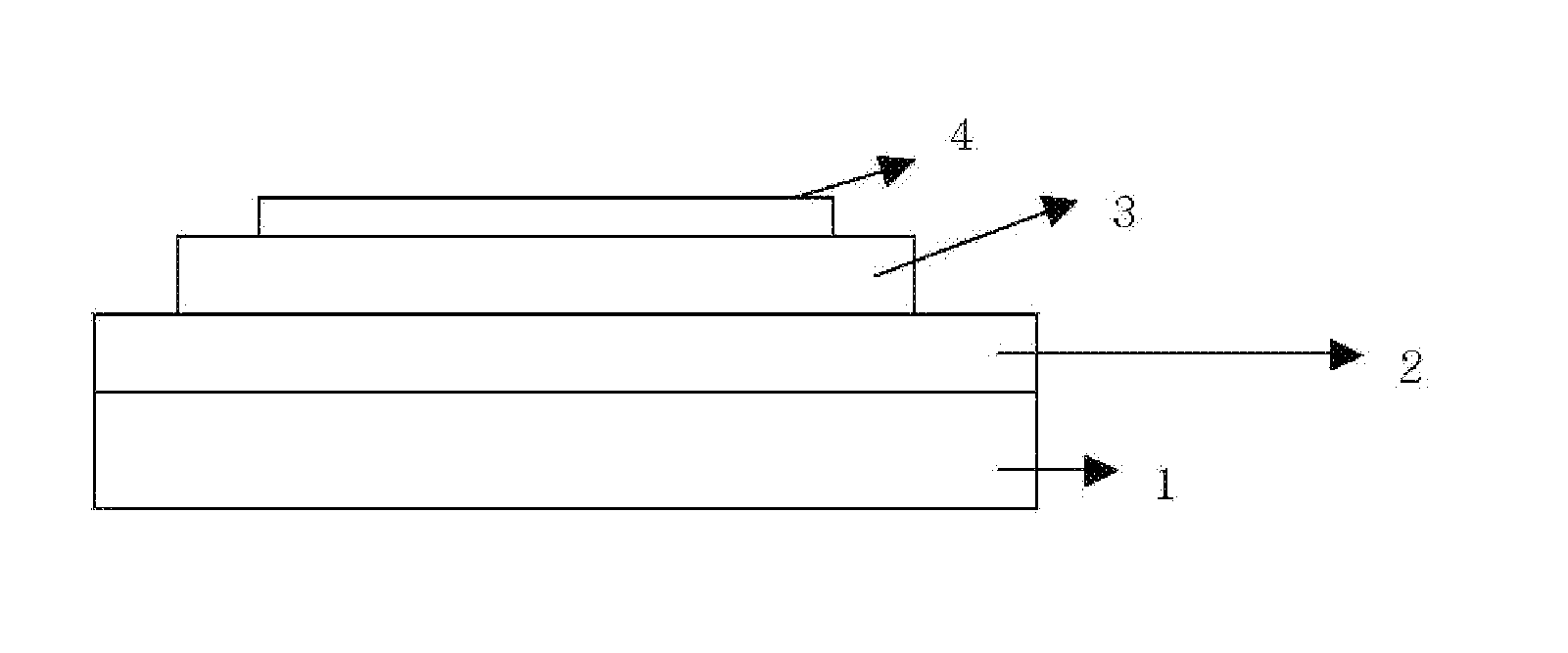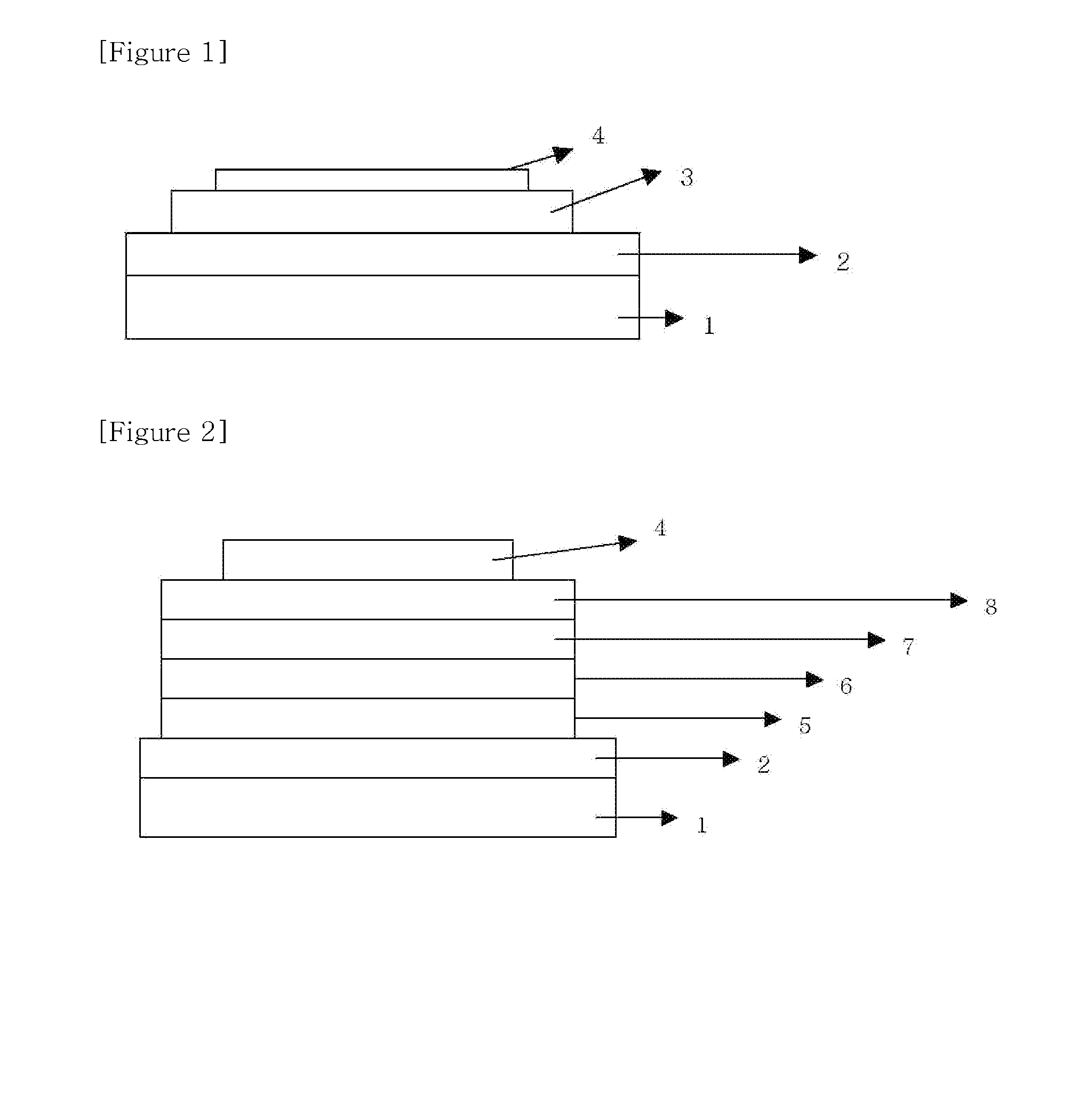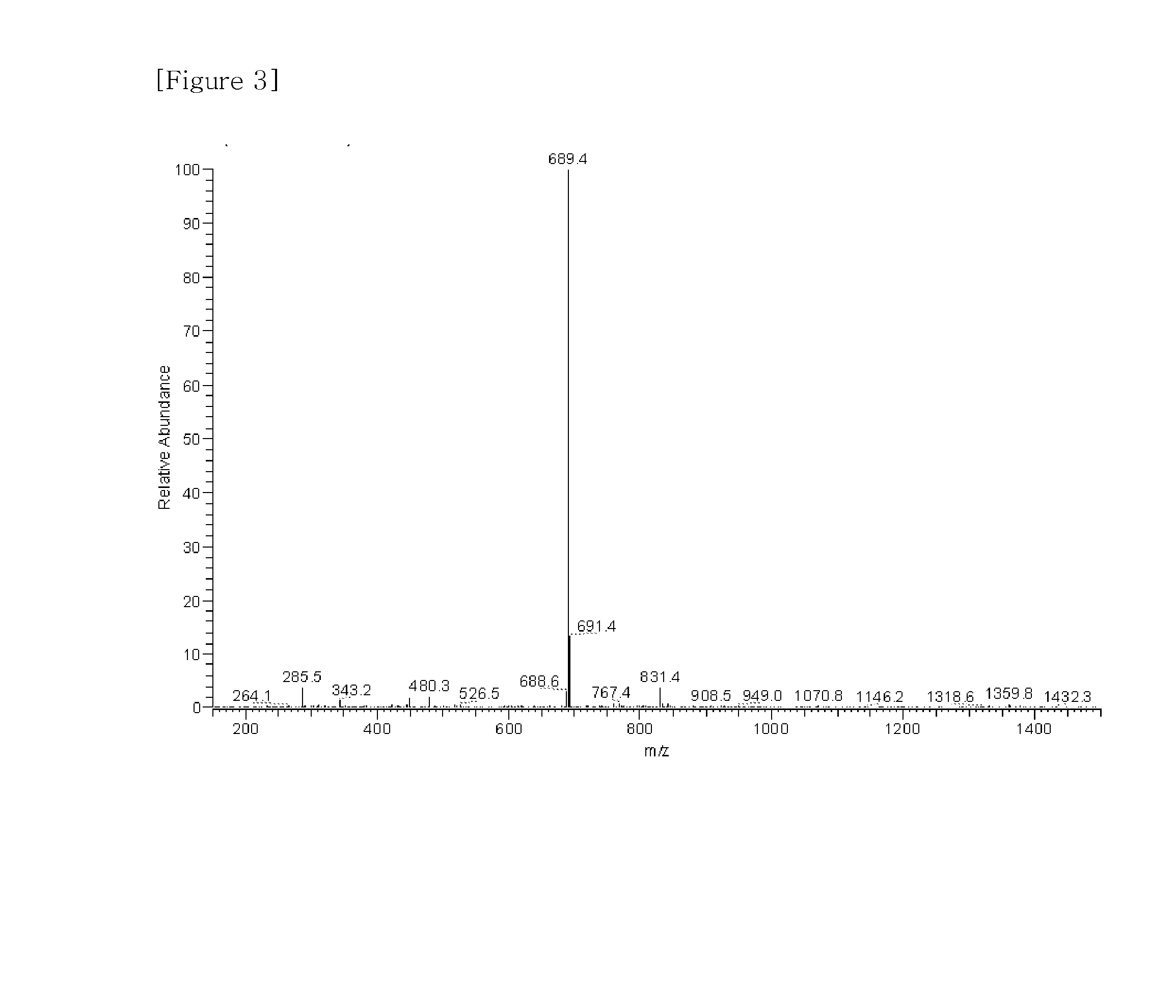Material for organic electronic device, and organic electronic device using same
a technology of electronic devices and materials, applied in the field of materials for organic electronic devices, and organic electronic devices using same, can solve the problems of difficult to apply to an organic light emitting device requiring a high current, difficult to produce an organic light emitting device having a high efficiency and a long lifespan, etc., to achieve the effect of improving the life time property of the device, reducing the driving voltage of the device, and improving the light efficiency
- Summary
- Abstract
- Description
- Claims
- Application Information
AI Technical Summary
Benefits of technology
Problems solved by technology
Method used
Image
Examples
synthesis example 1-b-no
Manufacturing of the Compound Represented by Formula 1-B-No
[0089]The compound 1-B, the aryl compound that was substituted with an excessive amount of iodine, 1 to 2 equivalents of Cu powder, and 3 to 6 equivalents of K2CO3 was added thereto, heated and agitated. The reactants were cooled to normal temperature, and extracted, distilled, purified, and dried with the organic solvent to manufacture the 1-B-No compound, the specific compound synthesized 1-B-1, and the results thereof are described in Table 1-B-No.
synthesis example 1-b-1
Manufacturing of the Compound Represented By Formula 1-B-1
[0090]The compound 1-B (10.0 g, 33.8 mmol), 120 ml of iodobenzene, 2 equivalents of Cu powder (4.3 g, 67.6 mmol), and 3 equivalents of K2CO3 (14.0 g, 101.4 mmol) were added thereto, heated and agitated for 12 hours. The reactants were cooled to normal temperature, extracted and distilled with the organic solvent, subjected to the column chromatography purification using n-hexane as the developing solvent, and dried to manufacture the 1-B-1 compound (22.9 g, yield 76%).
TABLE 3-1SynthesisExamplecompoundyield1-1-No1B-No—L1—Y0(%)MS1-1-3compound 1B-158[M]+ = 327 1-1-4compound 1B-262[M]+ = 403 1-1-5compound 1B-376[M]+ = 409
synthesis example 1-1-no
Synthesis of the Compound 1B-No
[0091]The compound 1-B, and 1 to 1.5 equivalents of the substituted or unsubstituted arylboronic acid (or arylboron ester) or substituted or unsubstituted heteroarylboronic acid (or arylboron ester) were put, dissolved in THF, 0.02 equivalents of Pd(PPh3) and 2 equivalents or more of 2M K2CO3 / H2O aqueous solution were added, and heated and agitated for 3 to 16 hours. The reaction mixture was cooled to normal temperature, filtered or extracted with the organic solvent, separated, purified, and dried to manufacture the 1-B-No compound, and the results thereof are described in Table 3-1.
1-1-3. Manufacturing of the Compound 1B-1
[0092]After the compound 1-B (4.48 g, 15.13 mmol) and 4-chlorophenyl boronic acid (2.84 g, 18.15 mmol) were dissolved in THF (150 mL), Pd(PPh3)4 (0.52 g, 0.45 mmol) and 70 ml of 2M K2CO3 / H2O aqueous solution were put thereinto and refluxed for 3 hours. Distilled water was put into the reaction solution, the termination was carried o...
PUM
 Login to View More
Login to View More Abstract
Description
Claims
Application Information
 Login to View More
Login to View More - R&D
- Intellectual Property
- Life Sciences
- Materials
- Tech Scout
- Unparalleled Data Quality
- Higher Quality Content
- 60% Fewer Hallucinations
Browse by: Latest US Patents, China's latest patents, Technical Efficacy Thesaurus, Application Domain, Technology Topic, Popular Technical Reports.
© 2025 PatSnap. All rights reserved.Legal|Privacy policy|Modern Slavery Act Transparency Statement|Sitemap|About US| Contact US: help@patsnap.com



